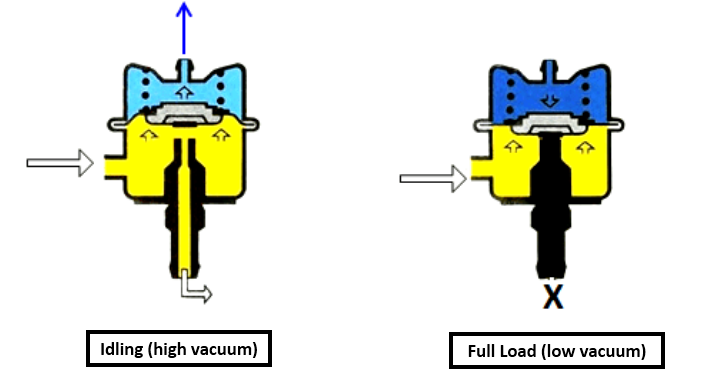How does a fuel pressure regulator work
The Fuel Pressure Regulator (FPR) is a fuel system component for cars that use the Electronic Fuel Injection (EFI) system. As the name implies, the Fuel Pressure Regulator functions to maintain the fuel pressure to remain the same (constant) in every engine working condition.
The engine needs this same fuel pressure to ensure the fuel coming out of the injectors is always a fog spray. In that way, the combustion results created inside the engine combustion chamber will be better and always optimal.
If the sprayed fuel is not in the form of a fog, then the engine will have problems. For example, the engine becomes hard to start, or the engine becomes more wasteful of fuel.
I. Fuel Pressure Regulator components
Inside the Fuel Pressure Regulator, there are three important components: springs, diaphragms, and fuel pressure regulating valve. Pay attention to the example image of the Fuel Pressure Regulator below.
The Fuel Pressure Regulator takes advantage of the amount of air vacuum inside the intake manifold to maintain fuel pressure following engine needs. For example, at idling (stationary/idle), full load, or even when the engine is turned off.
II. How does a fuel pressure regulator work?
Here's how the Fuel Pressure Regulator works in several engine conditions.
When the engine is idling
When idling, the injector will spray less fuel into the engine. As a result, the fuel pressure in the Delivery Pipe will increase. To prevent excessive pressure in the Delivery Pipe, the Fuel Pressure Regulator takes advantage of the amount of air vacuum inside the intake manifold.
This air vacuum is used to pull the diaphragm and open the fuel pressure regulating valve so the fuel back into the tank through the return pipe. When the fuel flows back into the tank, it causes the fuel pressure inside the Delivery Pipe remains balanced.
Read also:When the engine is at full load
Meanwhile, when the engine is in full load, the injector will spray more fuel. It means that the fuel pressure in the Delivery Pipe will immediately drop and decrease significantly.
The Fuel Pressure Regulator's spring will push the diaphragm back into its position make the fuel pressure regulating valve closed to prevent the loss of fuel pressure inside the Delivery Pipe due to the injector spraying a large amount of fuel,
Because the fuel regulator valve is closed, the fuel pressure in the Delivery Pipe will remain the same. Pay attention to the example of a working image of the Fuel Pressure Regulator below.
When the engine is turned off
If the engine stops and the fuel pump stops working, the springs will press the diaphragm and fuel regulator valve again. As a result, the fuel regulator valve is closed. At the same time, the check valve in the fuel pump will also close.
By closing the valve and fuel line by the check valve, the fuel pressure inside the delivery pipe can be maintained and remain the same. The existence of fuel pressure in the delivery pipe when the engine dies will make it easier for the engine to be started for the first time or started for the first time after the car has been parked for a long time.
If the Fuel Pressure Regulator is malfunctioning, damaged, or dirty due to a blocked valve, the fuel pressure regulator cannot maintain the fuel pressure. It will cause the engine to be hard to start; the engine idle speed becomes unstable and decreases engine power.
The size and value of fuel pressure required by the engine usually vary from one car to another because each manufacturer has determined it. But in general, the fuel pressure value is in between the 3kg/cm2 / 43psi / 294kpa range. To be sure, follow the Service Manual of each vehicle.
Therefore, if you need to replace the Fuel Pressure Regulator assemblies, it is highly recommended that you keep using the original parts. The purpose is that the resulting pressure can match the engine's needs.


